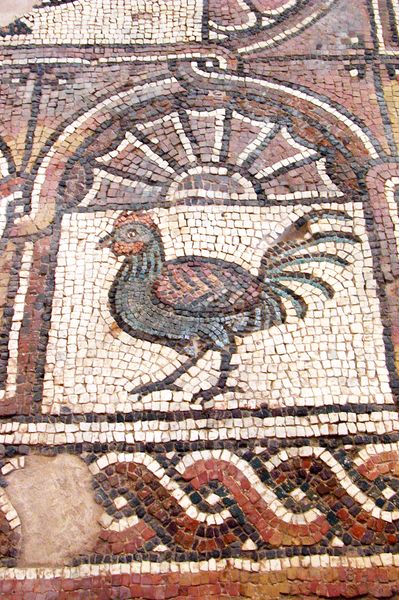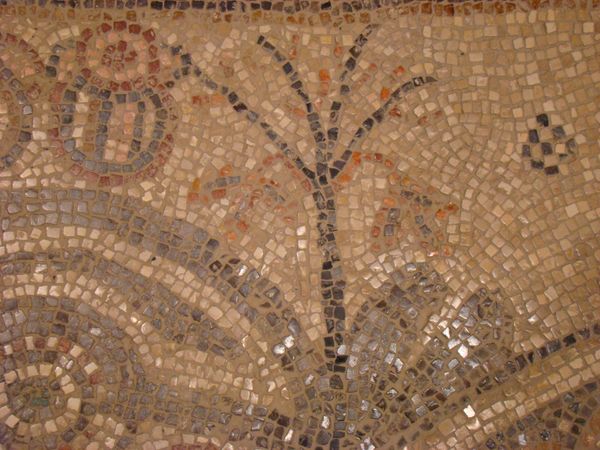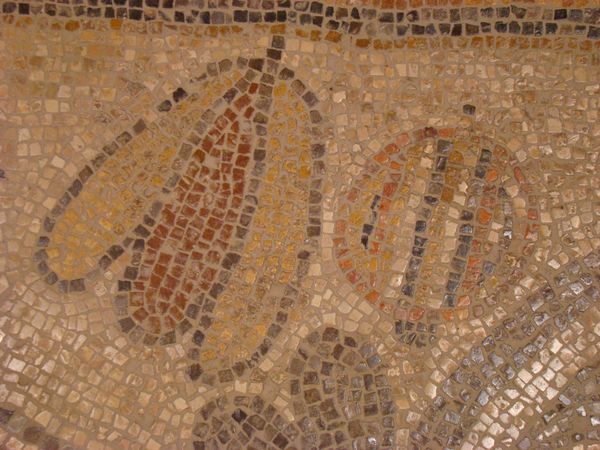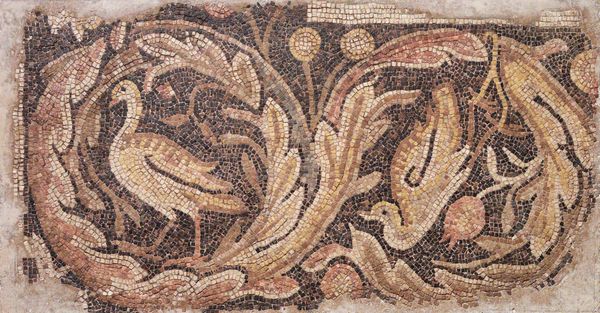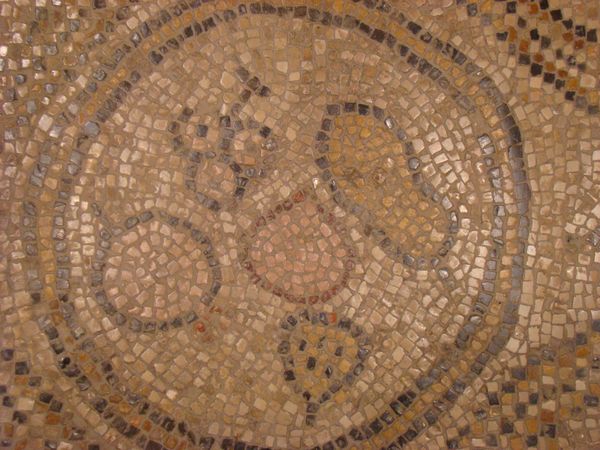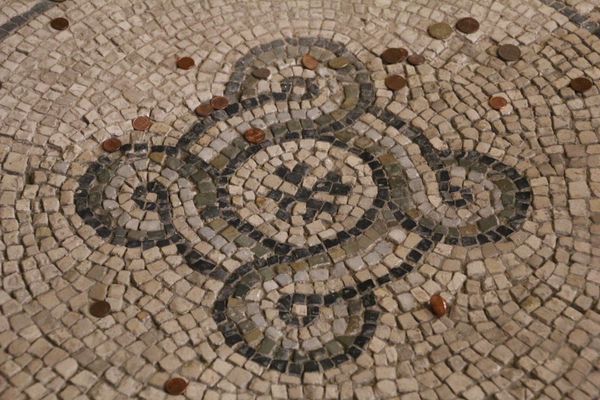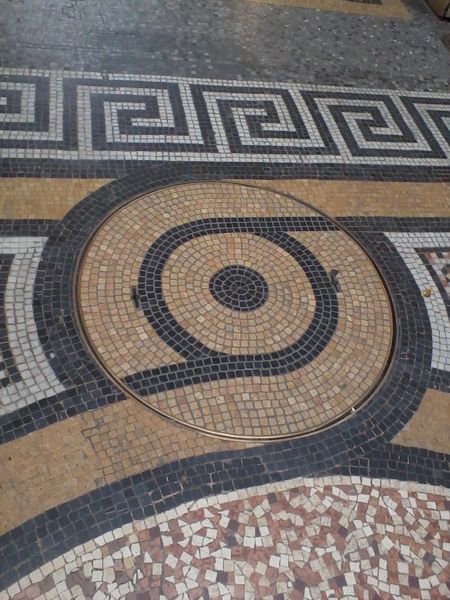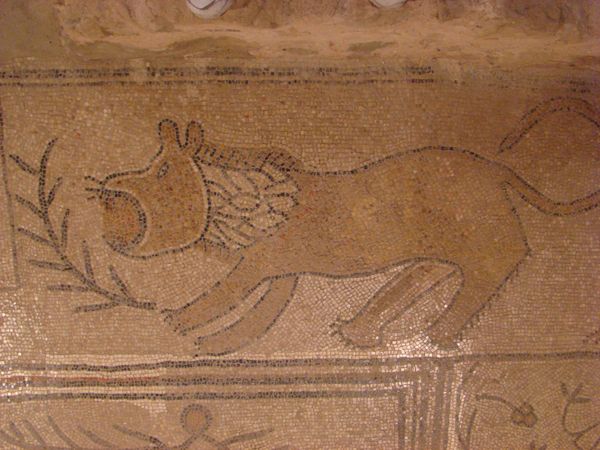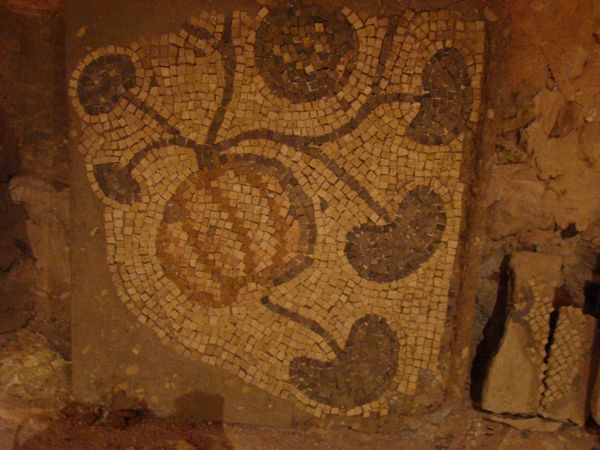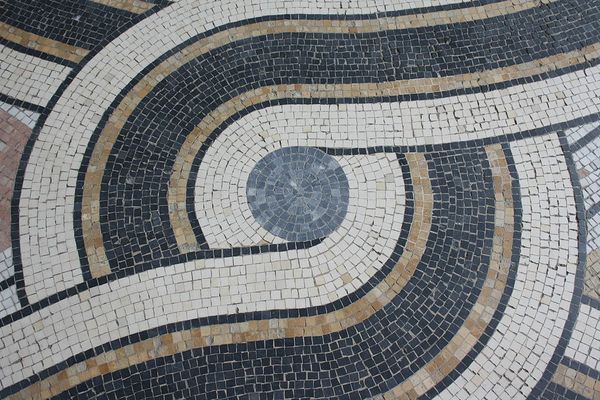
mosaic, carving
#
mosaic
#
byzantine-art
#
carving
#
figuration
#
geometric
#
decorative-art
Copyright: Public domain
This mosaic floor was made with small tiles by Byzantine artists, likely sometime between the fourth and fifteenth centuries. It was found in a church in Petra, Jordan, and depicts what appears to be a dolphin swimming below a semi-circular sun. The Byzantine Empire extended throughout the Eastern Mediterranean for over a thousand years. It was a deeply Christian society, centered in Constantinople, now Istanbul, but its influence was felt as far away as Petra. The church itself was likely funded by a wealthy patron or by the local Christian community, who would have commissioned Byzantine artists to create the mosaic floor. The dolphin may have had symbolic importance. Alternatively, the design may have been chosen simply for its beauty, which would reflect the glory of God. Historians can use the mosaic floor as a source of information about Byzantine art and culture. By studying the materials and techniques used, we can learn more about the artistic practices of the time. By researching the iconography and symbolism, we can gain insights into the beliefs and values of the people who created and used this artwork.
Comments
No comments
Be the first to comment and join the conversation on the ultimate creative platform.



